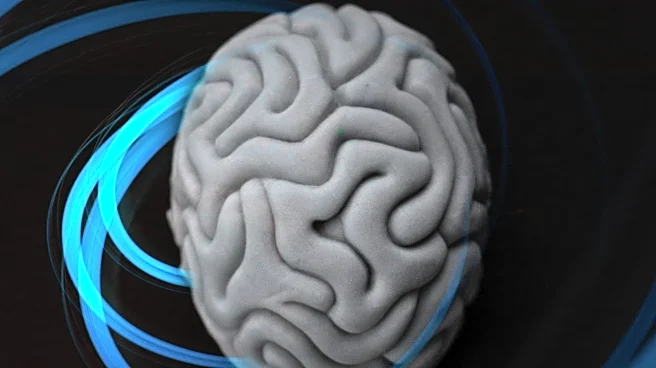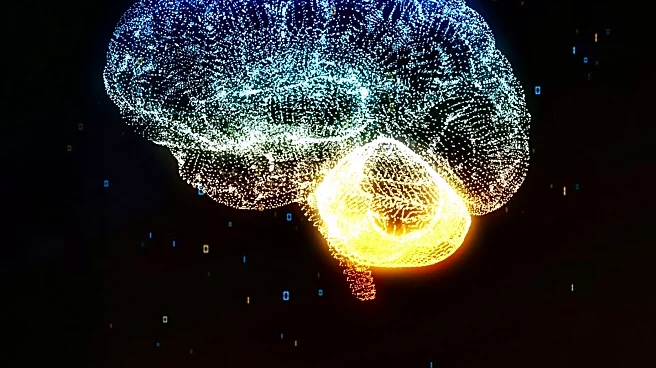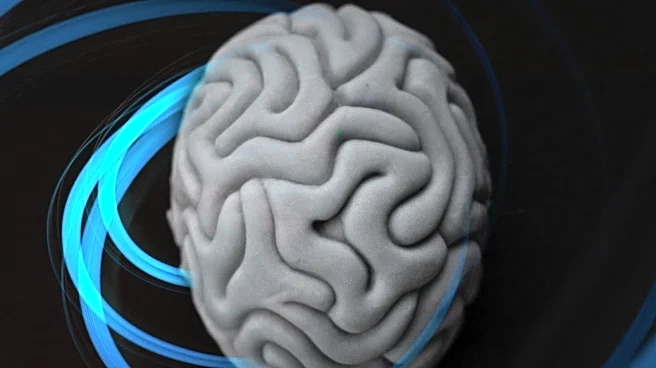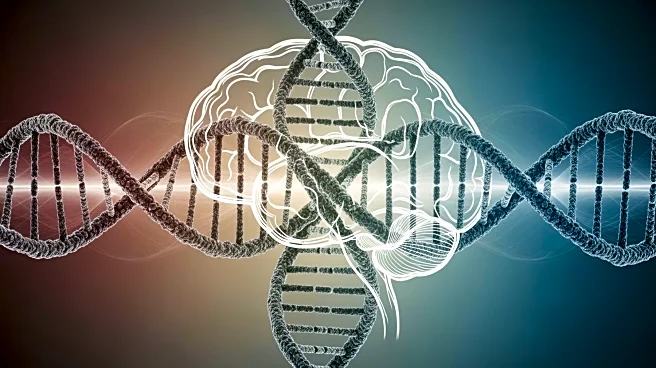What's Happening?
A recent study published in Advanced Science reveals that listening to a steady rhythm, such as a drumbeat or ticking clock, prompts the brain to reorganize its networks dynamically, syncing brainwaves to the beat in real time. Conducted by researchers
from Aarhus University and the University of Oxford, the study introduces a novel method called FREQ-NESS (Frequency-resolved Network Estimation via Source Separation). This tool maps brain activity by isolating distinct frequencies, showing how rhythms reshape neural connections. Using magnetoencephalography, researchers observed nearly 30 participants listening to a 2.4-hertz tone, discovering new brain networks forming at the sound’s frequency. Existing networks, like alpha networks tied to calm focus, shifted locations or altered rhythms. The study highlights the brain's ability to reconfigure itself in response to rhythmic stimuli.
Why It's Important?
The findings from this study have significant implications for neuroscience, potentially transforming research into conditions such as epilepsy, depression, and brain-computer interfaces. By offering a clearer insight into overlapping signals, the FREQ-NESS method could lead to personalized brain mapping for mental health or educational purposes. This approach may change how brain responses to music and other stimuli are studied, impacting our understanding of consciousness, mind-wandering, and interactions with the external world. The ability to observe real-time reconfiguration of brain networks could lead to advancements in therapeutic techniques and cognitive research.
What's Next?
The research team plans to expand the use of the FREQ-NESS method globally, aiming to enable personalized brain mapping for various applications. This could include mental health treatments, educational tools, and further exploration of brain responses to different stimuli. The study opens new avenues for understanding how the brain processes rhythm and its broader implications on cognitive functions and emotional responses.
Beyond the Headlines
The study's insights into brain reconfiguration could lead to ethical considerations regarding the manipulation of brain activity through external stimuli. As neuroscience advances, questions about privacy, consent, and the potential for misuse of brain mapping technologies may arise. Additionally, cultural dimensions related to music and rhythm could be explored, examining how different societies perceive and utilize rhythmic patterns in daily life.













